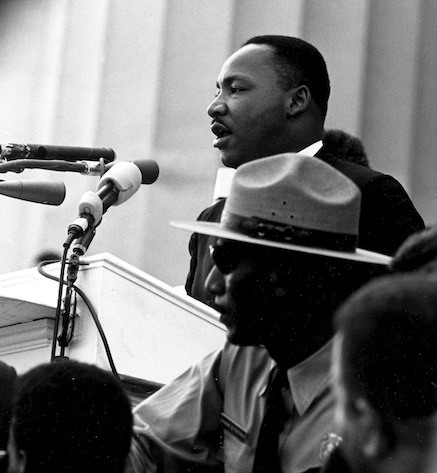I’m sometimes asked what I believe… (perhaps because I tend to get preachy at times, and I wear mostly black?)… and I have no easy answers. This is quite likely because (as I’ve aged) I’m less interested in knowing the right answers than in continuing to ponder relevant questions. Although I have never officially signed on to any particular belief system or denominational roster, I do consider myself to be a believer of sorts and a somewhat spiritual being.
I was raised within fundamental, unadorned, conservative Christianity as practiced by my devout Mennonite parents and forebears. This Anabaptist belief system (named after its radical 16th-century Protestant reformer-founder Menno Simons) puts much stock in Biblical primacy, salvation through conversion (sometimes proselityzed with missionary zeal), simple living, and a commitment to non-violence and pacifism—very similar to traits shared by our “cousins” the Amish (remember The Witness?), as Miriam Toews (award-winning author of the bestselling book A Complicated Kindness [set in the town of Steinbach where she was born a decade later than I] puts it)—Mennonites are “basically Amish… but with cars instead of buggies.”
For most of my elementary schooling my family lived in Reinach, Switzerland, on the outskirts of Basel where I attended private school. The stunning Goetheanum in Dornach (designed by esotericist Rudolf Steiner, and the world seat for Anthroposophy) was only 2 kilometers away and frequently a destination for Saturday bike rides—ironically, some forty-plus years later I find myself increasingly drawn to the transformative holism and social activism exemplified by Steiner and other Theosphists. I remember for a brief period as a teenager being enamored with Zoroastrianism—the concept of one universal and transcendental God and the call to actively live out one’s goodness (the walk as opposed to the talk) on a daily basis in order to stave off chaos, were of particular appeal. Much later in life I had the chance to visit India, where I encountered Gandhi’s very forthright book My Experiments with Truth—reinforcing the over-riding importance of active, actualized faith. Considerable time spent in Asia in the past few years has also been helpful in introducing me to the tenets of Buddhism.
After graduating from high school at Black Forest Academy (a private Christian school in southern Germany), I attended a year of religious study at Capernwray Hall, a Bible-based school housed in a 19th-century mansion and set in 175 acres of parkland just south of England’s famous Lake District in Carnforth, Lancashire. In spite of having already been steeped in organized religion by that point, I did learn a lot about the value of fellowship, as well as understanding for those from other cultures (the student body of 170 comprised individuals from some 22 different countries).
In 1973, a desire to put faith into action led me to Operation Palmbranch, an African relief mission based in Bavaria, Germany. This was an incredible learning opportunity, as we were a small team of volunteers re-building scrapped Mercedes Unimogs (amazing all-wheel-drive vehicles trashed by the military in NATO war games) that we would then drive down through the Sahara for use as mobile hospitals and surgical units in northern Zaire (now the Congo). I’d have to say I learned some of my greatest lessons in life during that time…
Today, I find myself believing more rather than less (inclusive vs. exclusive), while retaining many of the aspirational spiritual tenets I was raised with—faith as a core of destiny, the cardinal importance of love, a commitment to non-violence, a call to simple living, etc. I believe that the divine is alive in each of us (nascent transcendence), that faith takes us much further than fear, and that “love conquers all.”
A climbing analogy perhaps best describes my thinking regarding religions… The first recorded successful ascent of a mountain summit is often the most famous, and becomes the “classic route,” while latter ascents by other parties chart new routes and deviations (often more daring, frequently less obvious). Of course there are also summit attempts that fail catastrophically—so it behooves the summit-seeking climber to be well trained, well conditioned, well outfitted, and well focused.
Climb on…
















